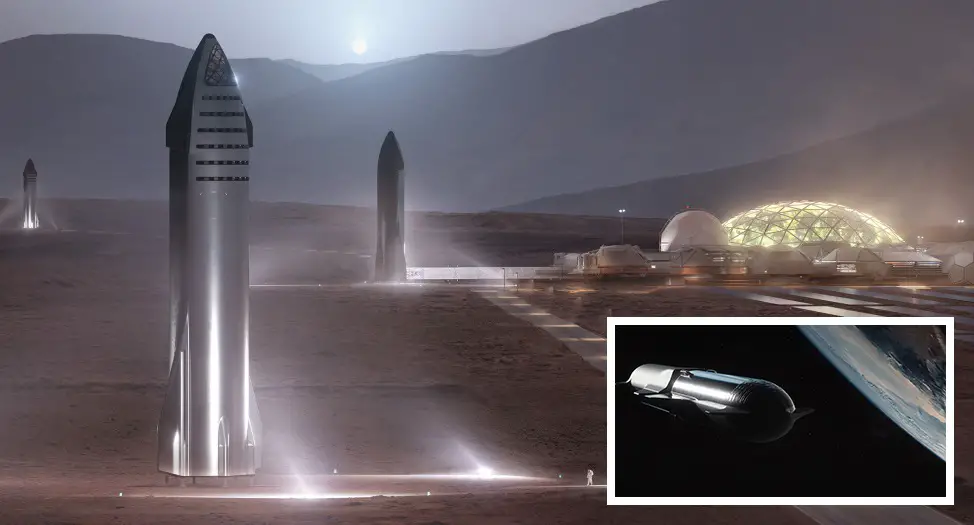if everything goes according to plan in March 2022, we will be one step closer to a future where spaceflight is more affordable and accessible than ever before with the inaugural launch of the biggest spaceship ever constructed.
The problem: We can learn a lot about the cosmos by sending people and sensors into space, but launch costs significantly restrict our ability to go beyond the Earth’s atmosphere.
As a result, every ounce of cargo added to a rocket increases the quantity of costly (and equally heavy) fuel necessary to escape Earth’s gravity. Sending huge equipment into orbit is significantly more expensive since larger, heavier rockets are required (and, thus, even more fuel).
As a final consideration, there are costs associated with the rockets themselves, which are typically built for a single launch and then either fall down to Earth or burn up in the atmosphere after delivering their cargo.
“Starships would revolutionize our ability to explore the solar system.”
Reusable rockets, like SpaceX’s Starship, are a cutting-edge innovation for the company, which has been a pioneer in this field. They may then be launched, again and again, reducing the cost of each launch.
Earlier this year, the corporation started work on a large launch system comprising of a Super Heavy first-stage booster rocket and a 165-foot spaceship. The system is expected to go into production in 2019. (the Starship).
Starship will be the world’s biggest and most powerful launch system when it is finished. At liftoff, NASA’s Saturn V, which powered the Apollo lunar missions, generated only 7.8 million pounds of thrust compared to the 17 million pounds of push produced by the Space Shuttle.
220,000 pounds of payload capacity into low-Earth orbit—more than four times the maximum capacity of SpaceX’s Falcon 9—but the most interesting aspect about Starship is that it is meant to be reusable.
According to CEO Elon Musk, reusing the Starship may reduce the cost of a launch to as little as $2 million.
A single launch of the Space Launch System (SLS), the successor to the Space Shuttle with a payload capacity of 154,000 pounds, is expected to cost at least $900 million (and possibly twice that much). The Space Shuttle had a payload capacity of 65,000 pounds and cost nearly $1.6 billion per mission.
Why this is important: At $10 million, according to Seradata analyst David Todd, Starship flights to low-Earth orbit are more plausible, but even so, the vehicle may significantly boost access to space.
According to UC Berkeley professor Andrew Westphal, “the cheap cost of access has the potential to fundamentally transform the game for scientific research.” Privately funded missions and coalitions of people flying objects together are also conceivable.
One Starship trip could send a 100-ton item to Europa’s surface or 100 people to Mars.
The recently launched James Webb Space Telescope, for example, could have fit with plenty of space to spare because to Starship’s ability to facilitate rideshare-type missions.
It is intended to be a general-purpose transit system for the whole solar system, Musk said in November 2021. A 100-ton device may be brought to the surface of Europa,” he said. Smaller rockets can not accomplish as much as this one can. As a result, I am quite excited about it.”
You can begin to populate Mars if you add 40 or more cabins to a Starship, as Musk proposes to do (provided you refuel in space).
There might be as many as five or six passengers each cabin, although Musk predicted that there will be only two or three passengers per cabin and a maximum of 100 people on each voyage to Mars in his 2017 interview with the Wall Street Journal.
There is a significant difference in cost between trips to low-Earth orbit (LEO) and missions to higher or deep space (DES).
How about this? When SpaceX successfully completed its maiden test flight of a smaller version of the rocket in August 2020, it sent the rocket on a 500-foot “jump” into the sky.
Several Starship prototypes have been launched and safely landed since that time, and the firm is now testing its 20th Starship prototype (SN20) at a launch site in Texas in preparation for an orbital test flight.
The first test flight of a full Starship system, including the Super Heavy rocket, and the first to cross the boundary into space will be conducted on this mission. A Starship prototype has only gotten as high as 6.2 miles in the air without crashing.
SpaceX’s orbital test mission is presently under investigation by the FAA. The launch might take place as soon as the 28th of February if all goes according to plan.
In the near future: SpaceX might launch a dozen or more test flights of Starship in 2022, Musk said in November 2021. A delay in the FAA’s decision-making may possibly reduce the number of flights by as much as a month.
This month’s launch of SpaceX’s first orbital test mission will likely be followed by many more before the year is through, which means that Musk’s November forecast that valuable payloads would be carried into space by the end of the decade might be realized.
In the future, Starship might be used to carry out a wide range of tasks that are now impossible.
Spaceships might revolutionize solar system exploration, according to Purdue University’s Ali Bramson, who spoke with MIT is Tech Review. “The field of planetary science is about to go off the rails.”

